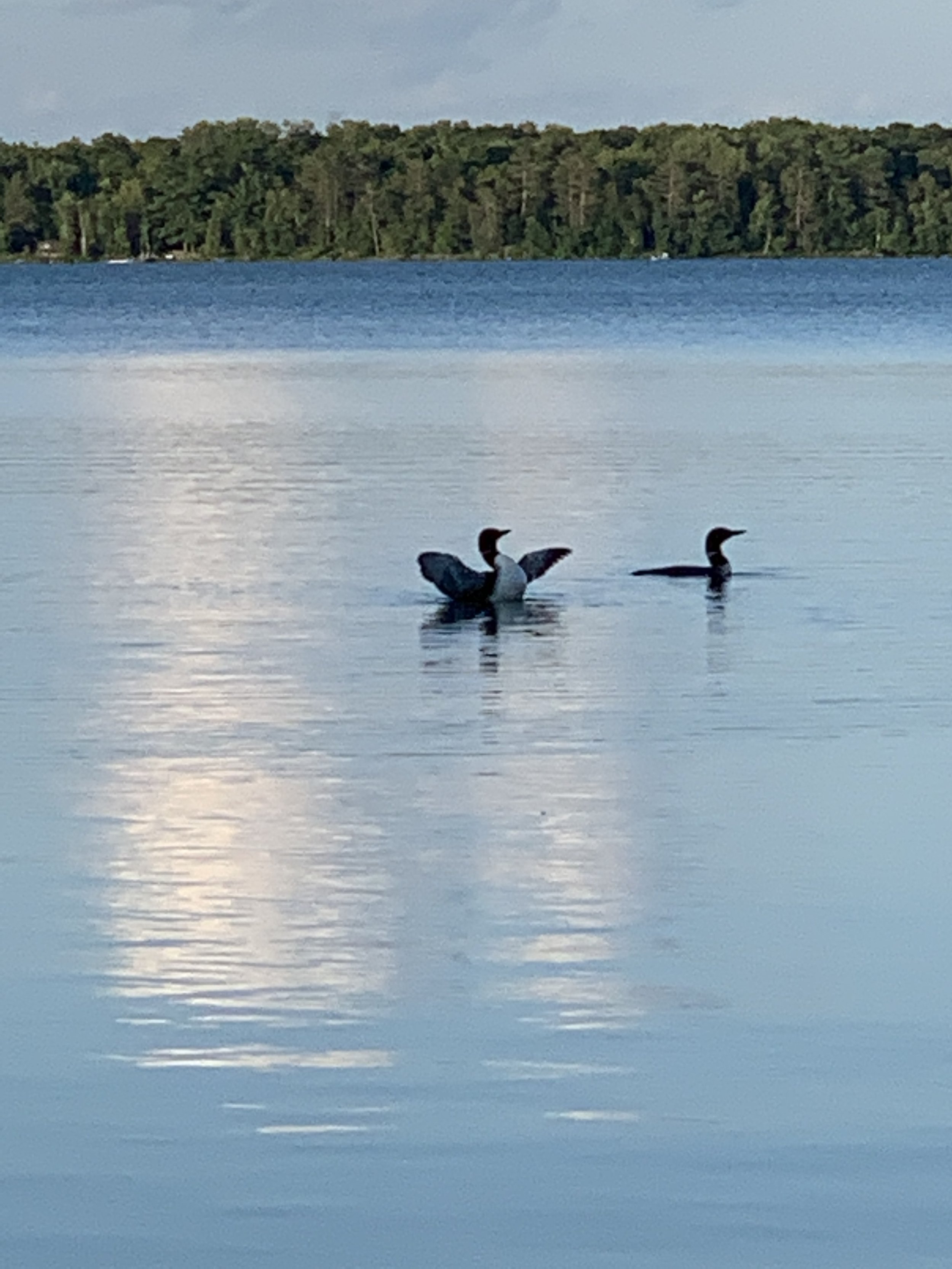(Continued from SLA 2024 Newsletter)
WHAT CAN YOU DO TO GIVE LOONS THE SPACE THEY NEED:
Please help protect these precious birds:
• If you see a nest, please keep your distance. Loons may abandon their nests if people come too close.
• Respect the wake zone and keep your boat wake low. Boat wakes can wash the eggs off the nest.
• Chicks hatch about the fourth week of June, or possibly later with our late ice out this year. After hatching, the parents escort the chicks to the nursery, a calm secluded area. Peace and quiet is essential, so resist the temptation to get close.
• PLEASE SLOW DOWN! As the chicks mature, the parents move out of the secluded areas to chick rearing areas. Unfortunately, this often puts the chicks in the pathways of boats. The chick rearing areas are close to islands and quiet bays as well as in open water before or after the no wake zones. Please slow down before you reach the no wake zones and keep your speed low as you exit no wake zones. Be alert for loons and juveniles and give them space. The juveniles are often left alone for short periods while their parents’ fish and socialize. Loon chicks cannot dive when very young to get out of the way of boats. They also tire easily. Even adult loons have difficulty staying out of harm’s way as boats approach and exit the area at high speed. When in open water, continue to watch for loons and keep your distance. A distance of 150 feet or more between your boat and a loon nest is recommended. If you see a loon on the nest with its head lowered, this indicates the loon feels threatened. If you see a nesting loon in this position, please back away until it lifts its head and resumes a more relaxed, upright position. This guideline applies not only to motor boats and jet skis but also to human-powered vessels such as canoes, kayaks, and stand-up paddle boards.

